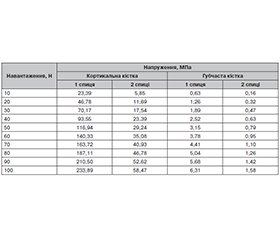Журнал «Травма» Том 25, №1-2, 2024
Вернуться к номеру
Спосіб фіксації вивихів акроміального кінця ключиці за Вебером: недоліки та їх чинники
Авторы: Бур’янов О.А. (1), Кваша В.П. (1), Чекушин Д.А. (1), Лянскорунський В.М. (1), Карпінський М.Ю. (2), Карпінська О.Д. (2)
(1) - Національний медичний університет імені О.О. Богомольця, м. Київ, Україна
(2) - ДУ «Інститут патології хребта та суглобів імені професора М.І. Ситенка НАМН України», м. Харків, Україна
Рубрики: Травматология и ортопедия
Разделы: Клинические исследования
Версия для печати
Актуальність. Вивихи акроміального кінця ключиці є доволі поширеним травматичним пошкодженням апарату руху й опори та, за даними різних авторів, становлять від 3 до 26,1 % від вивихів інших локалізацій і близько 10 % у структурі гострих пошкоджень плечового пояса, посідаючи третє місце після вивихів плеча та передпліччя. Зустрічаються переважно у чоловіків молодого, найбільш працездатного віку, що зумовлює соціальну значимість цього пошкодження. Стабілізація акроміального кінця ключиці зазвичай забезпечувалася фіксацією за Вебером та використанням hook platе. Мета дослідження: визначити недоліки та міцнісні характеристики кріпильних елементів при фіксації акроміального кінця ключиці за Вебером. Матеріали та методи. За період з 2015 по 2020 р. проведено ретроспективний аналіз результатів лікування 57 пацієнтів, яким було виконано оперативне втручання з приводу вивиху акроміального кінця ключиці з фіксацією за Вебером. У лабораторії біомеханіки ДУ «Інститут патології хребта та суглобів ім. проф. М.І. Ситенка НАМН України» були проведені розрахунки міцності фіксації акроміального кінця ключиці серкляжним дротом та спицями при його вивиху. Результати. За результатами клінічних досліджень порушення цілісності дроту та спиць спостерігалось у 10,5 % пацієнтів, руйнація акроміального відростка лопатки й акроміального кінця ключиці — у 19,3 %, міграція спиць — у 12,3 %. Результати експериментального дослідження свідчать, що ці недоліки чітко корелюють з механічними властивостями дроту та спиць. Висновки. Чинниками незадовільних результатів оперативного лікування вивихів акроміального кінця ключиці при застосуванні способу Вебера є порушення цілісності дроту та спиць, руйнація акроміального відростка лопатки й акроміального кінця ключиці, міграція спиць, які зумовлені механічними властивостями цих конструкцій.
Background. Dislocations of the acromial end of the clavicle are quite common traumatic injuries of the locomotor apparatus and, according to various authors, account for 3 to 26.1 % of dislocations of other locations and about 10 % in the structure of acute injuries of the shoulder girdle, ranking third after dislocated shoulders and forearms. They occur mainly in young men of the most working age, which determines the social significance of this injury. Stabilization of the acromial end of the clavicle, as a rule, was ensured by fixation according to Weber and the use of a hook plate. The purpose of the study: to determine the shortcomings and strength characteristics of the fastening elements in the fixation of the acromial end of the clavicle according to Weber. Materials and methods. From 2015 to 2020, a retrospective analysis was performed of treatment outcomes in 57 patients who underwent surgery for dislocation of the acromial end of the clavicle and Weber fixation. Calculations of the strength of fixation of the acromial end of the clavicle with a cerclage wire and spikes in case of its dislocation were carried out in the biomechanics laboratory of the State Institution “Sytenko Institute of Spine and Joint Pathology of the National Academy of Medical Sciences of Ukraine”. Results. According to the results of clinical studies, a violation of the integrity of the wire and spikes was observed in 10.5 % of cases, destruction of the acromion process and acromial end of the clavicle — in 19.3 %, migration of the spikes — in 12.3 %. Results of the experimental study show that these shortcomings are clearly correlated with the mechanical properties of the wire and spikes. Conclusions. The factors for unsatisfactory results of surgical treatment for dislocations of the acromial end of the clavicle when using Weber’s method are the violation of the integrity of the wire and spikes, the destruction of the acromion process and the acromial end of the clavicle, the migration of the spikes, which are caused by the mechanical properties of these structures.
акроміально-ключичний суглоб; вивихи; оперативне лікування; спосіб Вебера
acromioclavicular joint; dislocations; surgical treatment; Weber technique

